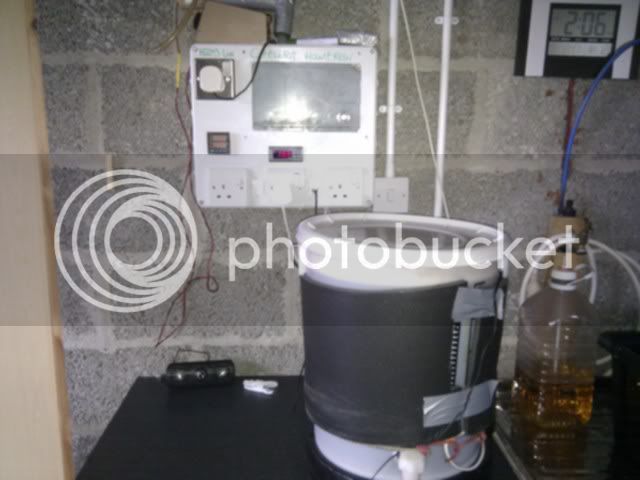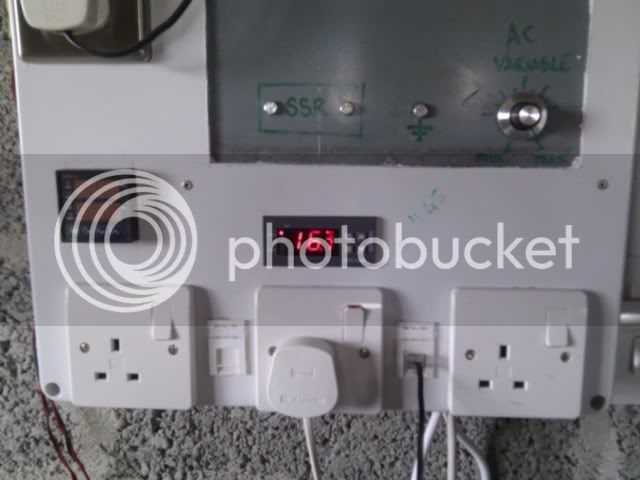Hi folks,
Only my 3rd post with a 2 day old Coopers lager kit on the go, so very much a newbie.
Before starting my first kit I did a bit of research and watched a few videos, Craig Tube ect and found out that temperature control is responsible for many failures as well as failing to sterilize properly, so when I went to my local brew shop I had a shopping list of things in addition to my Coopers Home Brew in a box.
Interestingly I was talked out of a heater by the shop keeper which was interesting for two reasons. The first, when a shop keeper tells me not to buy something because I don't need it they almost certainly guarantee me coming back as a life-long customer. The second is everything is progressing as they said it would, so what's the problem?
Well the fv is in my dinning room where the current day time temperature is about 22degrees, the evening temperature probably drops to about 12-13 degrees C. So I'm guessing the fermenting slows at night and speeds up during the day, so first question, is this a problem? It certainly appears to be bubbling away with a residue left on the Krausen Collar, so I'm guessing its ok.
So what about colder conditions in the autumn and winter? I would expect my house to be about 21-22 degrees with the heating on but much less in the dead of night once the heating is off and the house cooled down. Presumably I would need a heater then? I have looked at the brewing heaters and they seem strange in that they don't have thermostats. Are they fixed at a particular heat setting? If not I can't see what use they are. I know some folks use aquarium heaters with built in thermostats but then you have to modify your brewing bucket or find a huge bowl of water to stand it in and put the heater in that. Neither seem like a good solution.
Having identified that temperature is an issue there doesn't seem to be a simple solution to it, or have I got the wrong end of the stick with heat belts and mats?
Blackrat :wha:
Only my 3rd post with a 2 day old Coopers lager kit on the go, so very much a newbie.
Before starting my first kit I did a bit of research and watched a few videos, Craig Tube ect and found out that temperature control is responsible for many failures as well as failing to sterilize properly, so when I went to my local brew shop I had a shopping list of things in addition to my Coopers Home Brew in a box.
Interestingly I was talked out of a heater by the shop keeper which was interesting for two reasons. The first, when a shop keeper tells me not to buy something because I don't need it they almost certainly guarantee me coming back as a life-long customer. The second is everything is progressing as they said it would, so what's the problem?
Well the fv is in my dinning room where the current day time temperature is about 22degrees, the evening temperature probably drops to about 12-13 degrees C. So I'm guessing the fermenting slows at night and speeds up during the day, so first question, is this a problem? It certainly appears to be bubbling away with a residue left on the Krausen Collar, so I'm guessing its ok.
So what about colder conditions in the autumn and winter? I would expect my house to be about 21-22 degrees with the heating on but much less in the dead of night once the heating is off and the house cooled down. Presumably I would need a heater then? I have looked at the brewing heaters and they seem strange in that they don't have thermostats. Are they fixed at a particular heat setting? If not I can't see what use they are. I know some folks use aquarium heaters with built in thermostats but then you have to modify your brewing bucket or find a huge bowl of water to stand it in and put the heater in that. Neither seem like a good solution.
Having identified that temperature is an issue there doesn't seem to be a simple solution to it, or have I got the wrong end of the stick with heat belts and mats?
Blackrat :wha:





































![BREWING THERMOMETER STICKERS ACCURATELY MONITOR FERMENTING BEER & WINE LIQUID TEMPERATURES 5PCS HOME BREW SPIRITS WINE LCD ADHESIVE [US]](https://m.media-amazon.com/images/I/311DDjo2X3L._SL500_.jpg)







 :twisted: . . . Everything else remained the same . . . Like advising people to pitch and ferment lager yeast at 20C . . . only using one sachet
:twisted: . . . Everything else remained the same . . . Like advising people to pitch and ferment lager yeast at 20C . . . only using one sachet